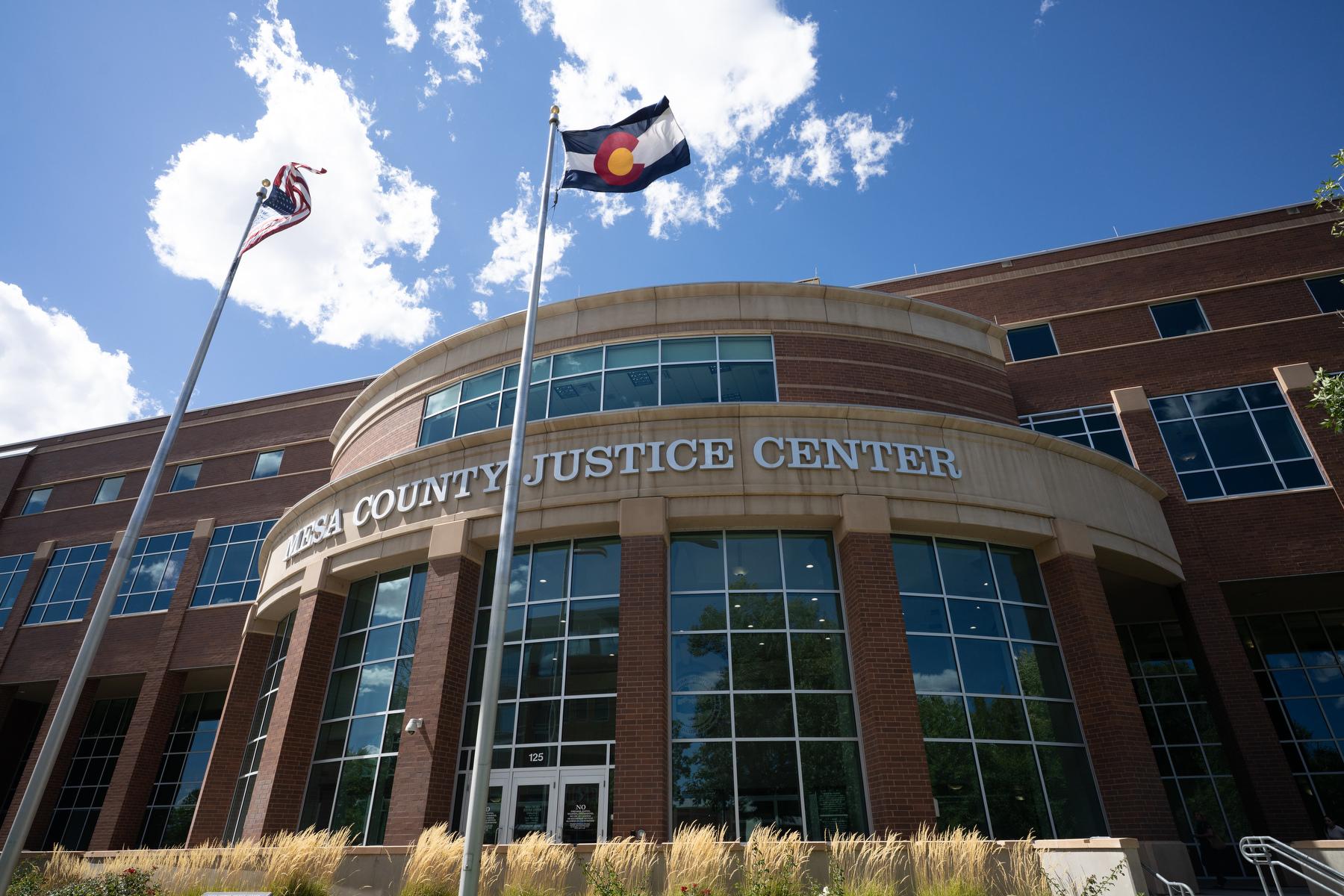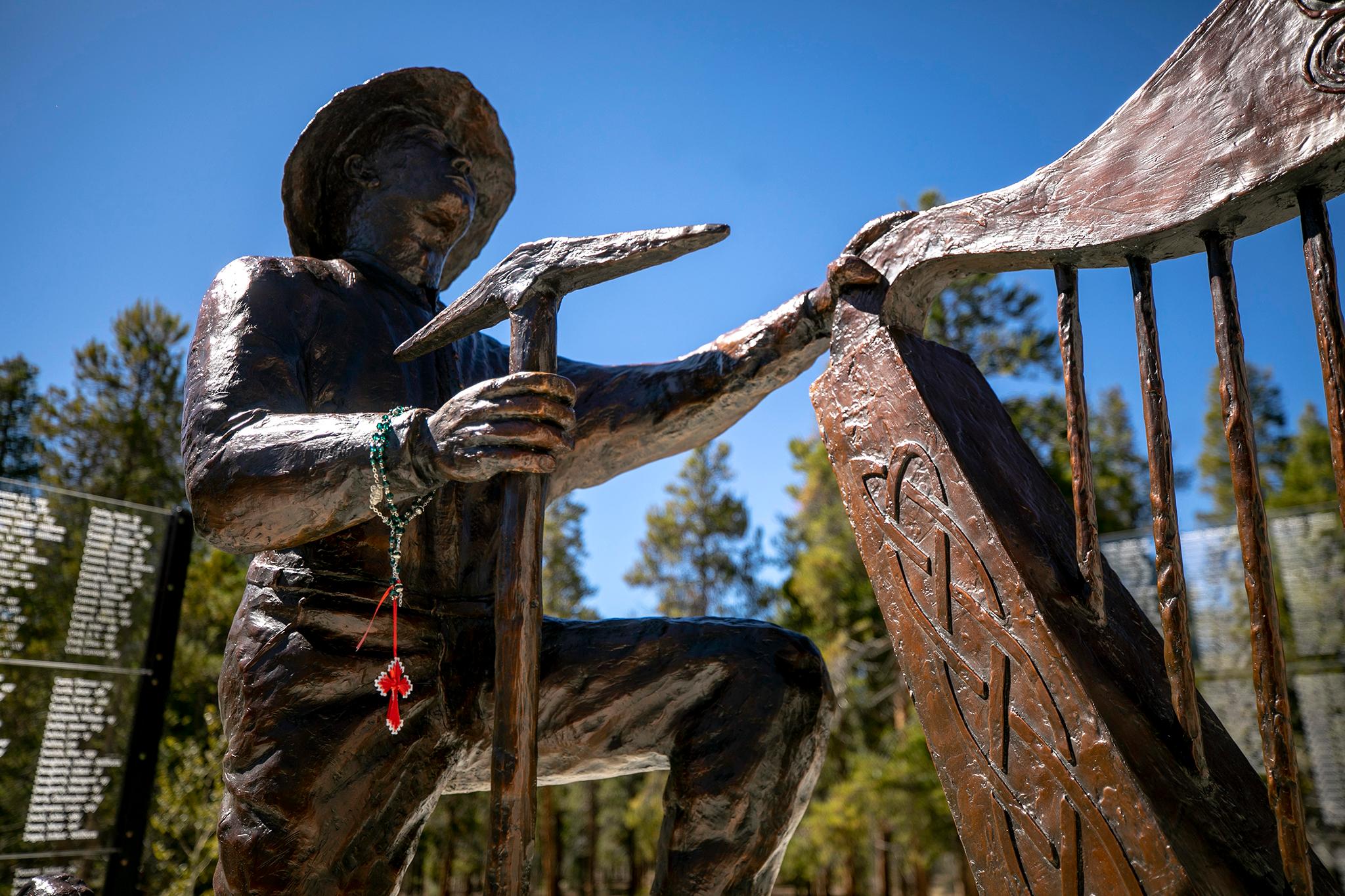
In the late 1800s, miners — many of them Irish — settled in Leadville, Colorado, to make their fortune.
Instead, thousands met their demise. They died penniless and were buried in unmarked graves.
With financial support from the Irish government, researchers were able to identify them and the community has erected a new memorial in Leadville’s Evergreen Cemetery.
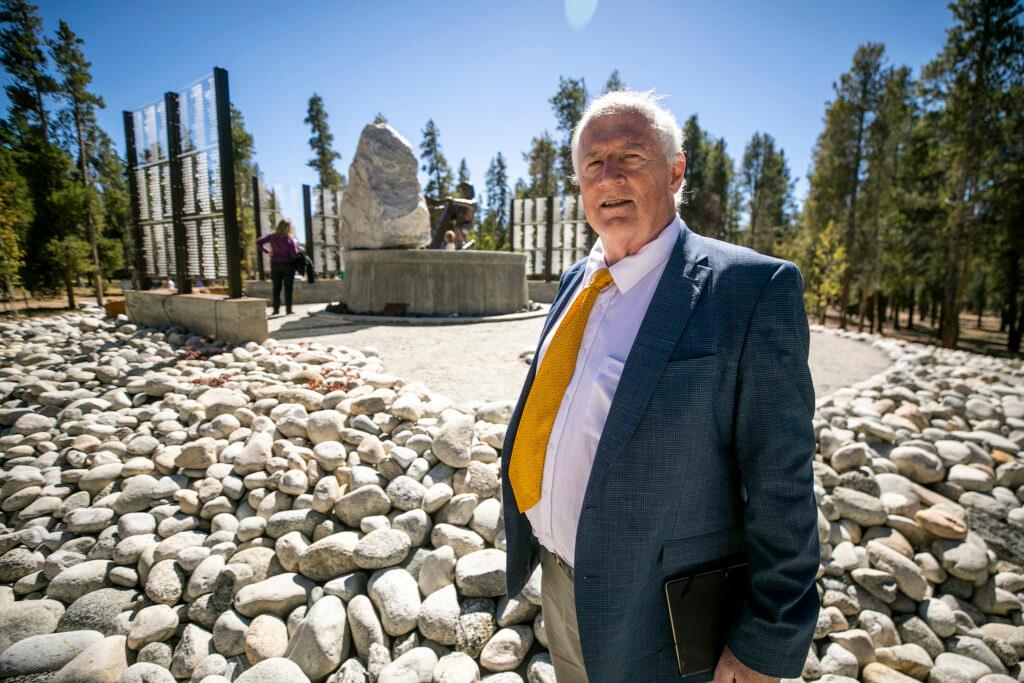
At the heart of the new memorial is a larger-than-life sculpture of a miner — dubbed “Liam.” He is the creation of Irish artist Terry Brennan, who lives in the same part of Ireland where many of the miners emigrated from.
Brennan discussed the piece with Colorado Matters Senior Host Ryan Warner.
Read the interview
Ryan Warner: Describe Liam for us.
Terry Brennan: Liam, the bronze statue, is a representation of my understanding of what an Irish-American would be thinking in revering his own culture, where he came from and where he was going. He's facing east, which is the general direction of where he came from — from Ireland. His pose is down on one knee with his hand on a harp — the harp being the national symbol of Ireland. Most people here think it's a shamrock, but it's actually not.
What's in front of him?
The action in the pose for me was that he has an ax in his other hand, and facing him is a big rock. (He’s) a figure carving his culture into and out of the Rocky Mountains.
Who's the model? Whom did you fashion Liam after?
I said to myself, ‘I need a long, skinny model.’ And then I realized that my daughter and her boyfriend were coming back from Peru on a plane, and he's a long skinny fella called Liam McHugh. That's where the statue got his name from. They're calling him Liam O'Sullivan — O'Sullivan being a really popular name down in West Cork, where all the miners came from.
I want to point out the connection between Leadville and one region of Ireland in particular.
That region is Allihies in West Cork. Leadville is a remote city in America, and Allihies is one of the most remote villages in Ireland. So they're well-suited together, even though Leadville is two miles up in the air, and Allihies is down at sea level. But the association being that the mine closed down in Allihies (in 1884), and this was announced one Sunday morning at mass by the local priest, ‘Don't go to work tomorrow, lads, there's nothing there anymore. It's closed.’ So they all had no work and there was no welfare state back then, so they all had to up and leave.
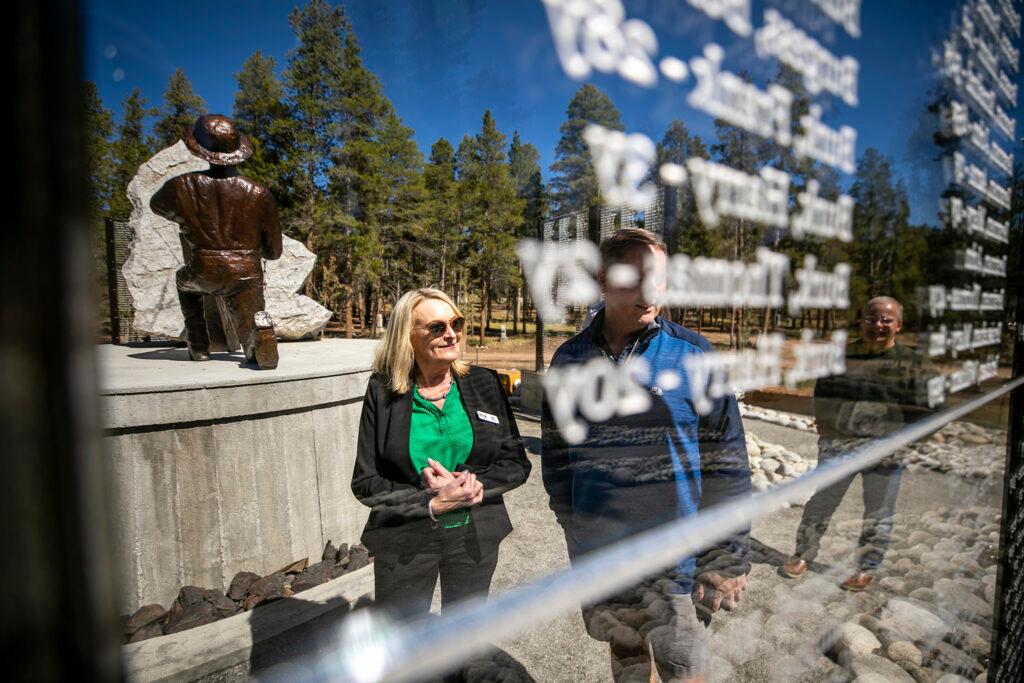
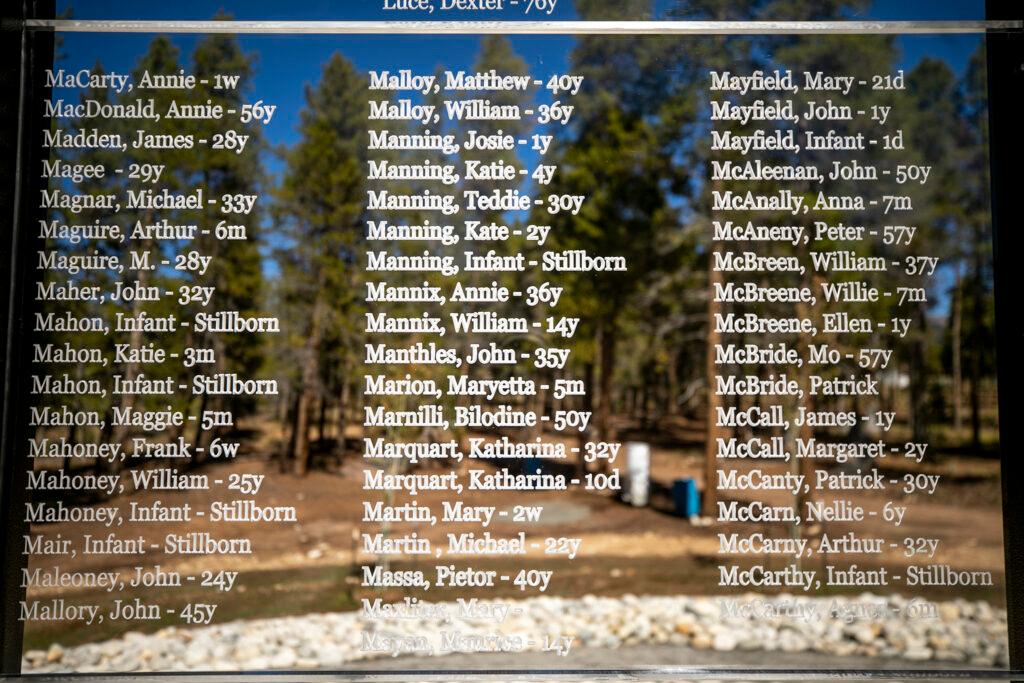
That's the impetus for so many of them coming to Leadville.
You had people who had nothing and then you had people who had absolutely nothing. Neil Armstrong had more information about the moon when he was going there than those people had coming here about what was here.
What details were you sure to include as you sculpted Liam, and how was it to sculpt him?
It took seven months and COVID provided the time because everything was shut down in Ireland. The materials were easy enough to source, and I just got busy in a big workshop underneath my house. And the elements were the ax — it being the implement of the miner, the harp — being the symbol of Ireland. And I gave it four strings because there are four provinces in Ireland. Then the figure itself — dressed as a miner — with boots and a hat and an expression on his face.
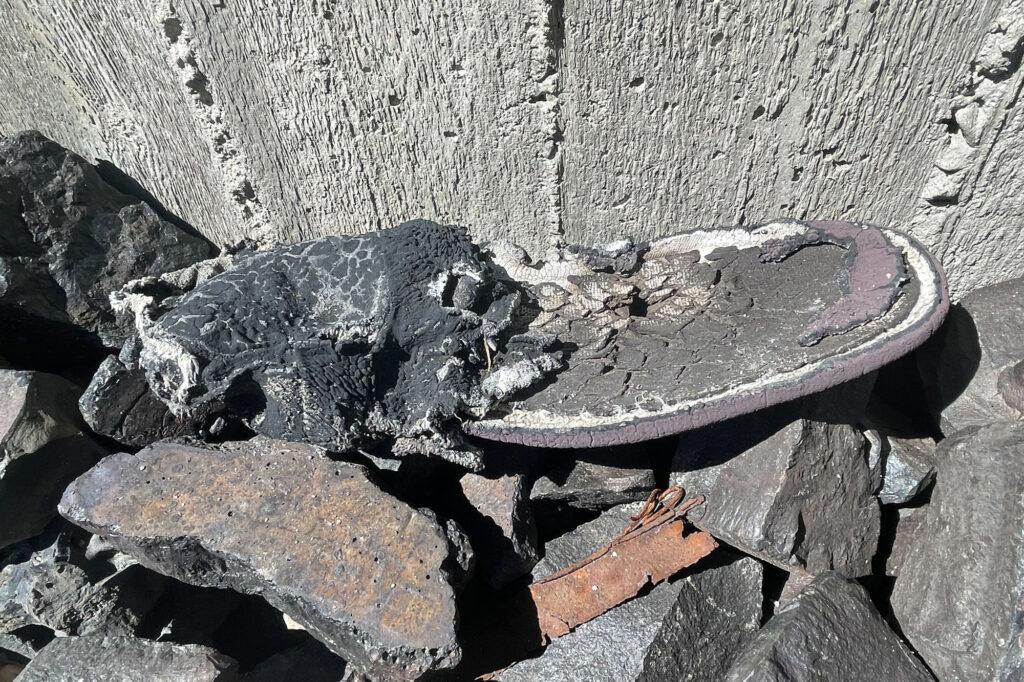
One walks to the sculpture by going up a spiral mound. Surrounding the sculpture of Liam are glass panels with names of people who succumbed in Leadville. I also noticed at the base, there was an old rusty can and a shoe– items from another time. What is that?
They're items that were found in the mines here. There are little door handles and also ax heads, and all sorts of other little things in the trench around the base. They're just commemorative of the activity of the miners more than anything else. It's a very intimate piece.
And forged in Loveland, Colorado!
Yeah. It was too expensive to forge it in Ireland, so they forged it over here where it costs significantly less. So we flew it over in a big box. And we arranged a customs clearance agent to handle all the paperwork, which was incredible. We had 60 pages of documents to go through.
How tall is Liam?
From his knee to his head is about six feet. So it's ten to 15% bigger than actual life. That's on the advice of a sculptor in Dublin called John Coll, who was very helpful and gave me great advice. He said ‘If you make it the same size as real life, it'll look half the size outdoors.’ That's what happens when you take something outdoors and you put it up on a pedestal. It shrinks visually.
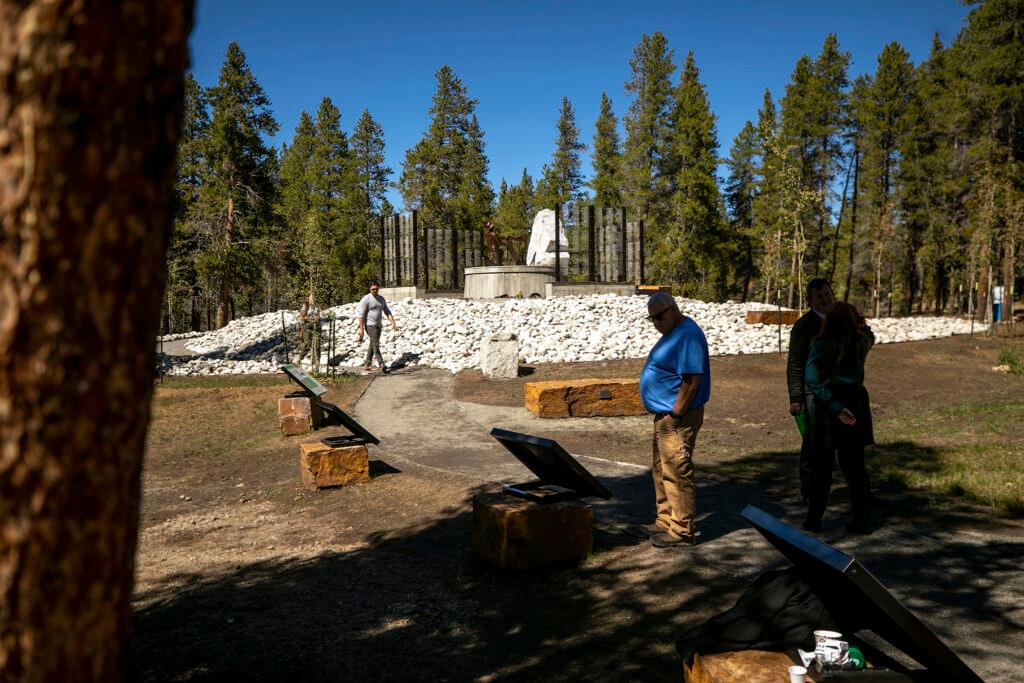
And this the largest piece you've ever done?
Yes, absolutely.
Will it be hard to leave Liam behind and go home?
Well, I get to go home with the real one. My daughter's boyfriend is over here, as well. He came over and so did she!





